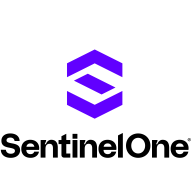


CoreOS Clair and Red Hat Advanced Cluster Security for Kubernetes compete in the container and Kubernetes security market. Red Hat Advanced Cluster Security for Kubernetes has an upper hand due to its advanced features and comprehensive security solutions.
Features: CoreOS Clair users value its integration capabilities, ease of use, and open-source nature. Red Hat Advanced Cluster Security for Kubernetes is praised for comprehensive security, visibility, and compliance features. Red Hat's extensive functionalities provide a more rounded security solution with enhanced visibility, better compliance controls, and deep integration with Kubernetes.
Room for Improvement: CoreOS Clair users seek more extensive documentation, improved scanning speed, and a better user interface. Red Hat Advanced Cluster Security for Kubernetes users desire better integration options, more user-friendly configurations, and an improved policy management system. CoreOS Clair focuses on performance, whereas Red Hat focuses on integration and user configuration.
Ease of Deployment and Customer Service: CoreOS Clair is easier to deploy but has limited customer support. Red Hat Advanced Cluster Security for Kubernetes poses more deployment challenges but offers superior customer service. Users find Red Hat's support team more responsive and helpful, offering a higher level of assistance post-deployment.
Pricing and ROI: CoreOS Clair attracts users with lower setup costs. Red Hat Advanced Cluster Security for Kubernetes, though costlier, is considered to provide better ROI due to its robust features and effective support. Users feel the investment in Red Hat's solution translates into higher long-term value with a more comprehensive security infrastructure.



SentinelOne Singularity Cloud Security protects cloud workloads, offering advanced threat detection and automated response. It integrates seamlessly with cloud environments and secures containerized applications and virtual machines against vulnerabilities.
SentinelOne Singularity Cloud Security is renowned for its efficiency in mitigating threats in real-time. The platform integrates effortlessly with existing cloud environments, ensuring robust cloud security management with minimal manual intervention. Securing containerized applications and virtual machines, it excels in threat intelligence and endpoint protection. However, improvements are needed in performance during high workload periods, and more integrations with third-party tools and better documentation would be beneficial. Users often find the installation process complex, support response times slow, and the dashboard's navigation unintuitive.
What are the key features of SentinelOne Singularity Cloud Security?In specific industries, SentinelOne Singularity Cloud Security is implemented to safeguard critical data and infrastructure. Organizations in finance, healthcare, and technology depend on its real-time threat detection and automated response to protect sensitive information. Its ability to secure containerized applications and virtual machines is particularly valuable in dynamic environments where rapid scaling is necessary.
Clair is an open source project for the static analysis of vulnerabilities in appc and docker containers.
Vulnerability data is continuously imported from a known set of sources and correlated with the indexed contents of container images in order to produce lists of vulnerabilities that threaten a container. When vulnerability data changes upstream, the previous state and new state of the vulnerability along with the images they affect can be sent via webhook to a configured endpoint. All major components can be customized programmatically at compile-time without forking the project.
Red Hat Advanced Cluster Security for Kubernetes is a Kubernetes-native container security solution that enables your organization to more securely build, deploy, and run cloud-native applications from anywhere. With its built-in security across the entire software development life cycle, you can lower your operational costs, reduce operational risk, and increase developer productivity while improving your security posture immediately. In addition, Red Hat Advanced Cluster Security integrates with security tools and DevOps in an effort to help you mitigate threats and enforce security policies that minimize operational risk to your applications. It also enables you to provide developers with actionable, context-rich guidelines integrated into existing workflows, along with tooling to support developer productivity. The solution is suitable for small, medium, and large-sized companies.
Red Hat Advanced Cluster Security for Kubernetes Features
Red Hat Advanced Cluster Security for Kubernetes has many valuable key features. Some of the most useful ones include:
Red Hat Advanced Cluster Security for Kubernetes Benefits
There are many benefits to implementing Red Hat Advanced Cluster Security for Kubernetes. Some of the biggest advantages the solution offers include:
Reviews from Real Users
PeerSpot user Igor K., Owner/Full Stack Software Engineer at Maraphonic, Inc., says, “The solution allows teams to create their own virtual spaces and share resources. The most valuable feature is the ability to share resources.”
We monitor all Container Security reviews to prevent fraudulent reviews and keep review quality high. We do not post reviews by company employees or direct competitors. We validate each review for authenticity via cross-reference with LinkedIn, and personal follow-up with the reviewer when necessary.